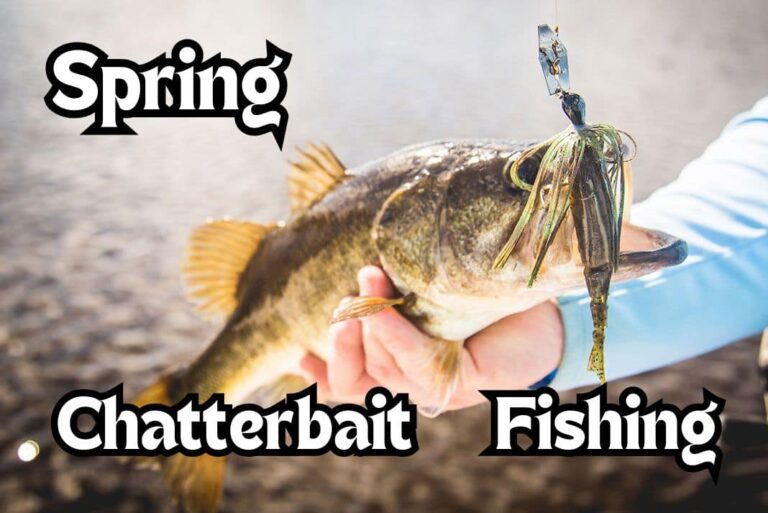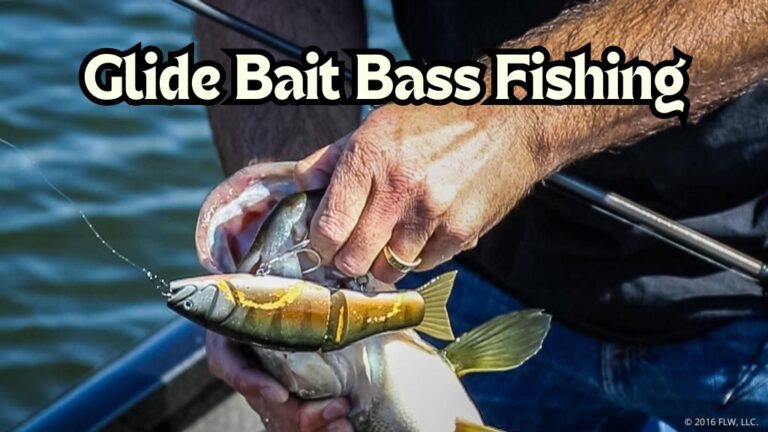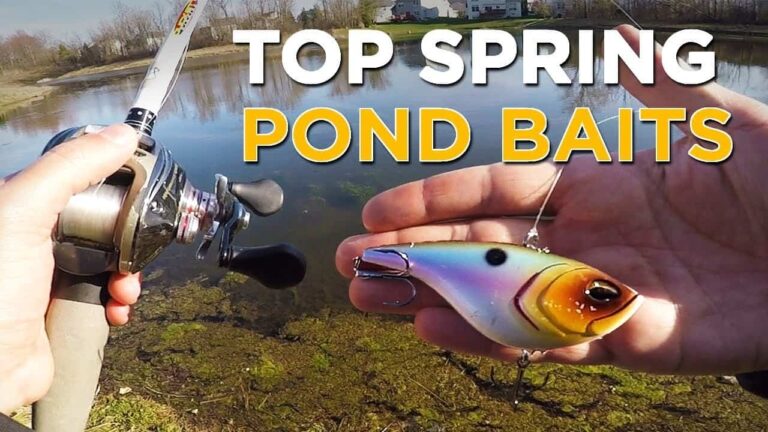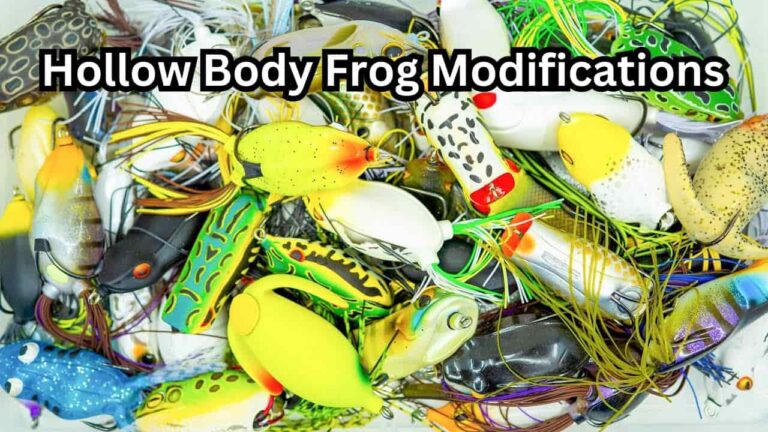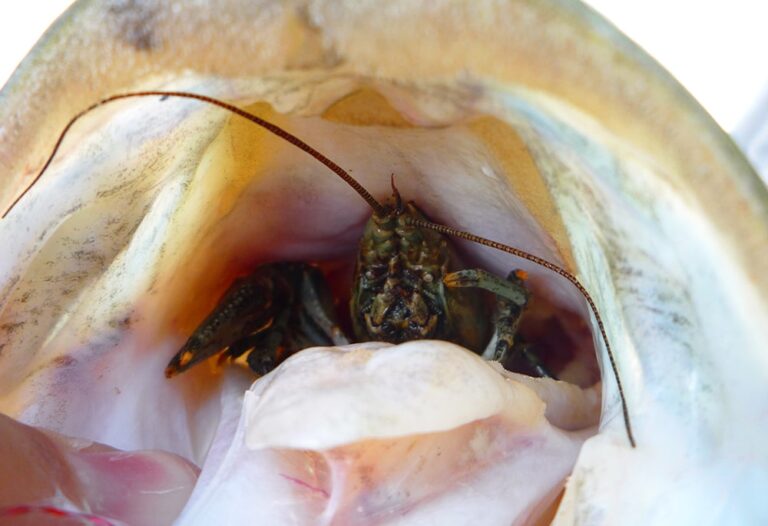7 Ways How to Rig a Tube Bait Weedless

Tube are fantastic baits for both largemouth and smallmouth bass.
They are classic soft plastic baits that are certainly underused in today’s bass fishing world.
One thing that discourages many fisherman from using tubes is that they think they will get snagged easily. Well here is how to rig a tube bait weedless.
How to Rig a Tube Bait Weedless
There are actually a lot of different rigging techniques for tubes that will make them snagless.
These seven have given me the best results without having to use any fancy equipment or brake the bank.
1. Stupid Rig

The stupid rig is the most popular way of making your tube bait weedless.
The name comes from the fact that the tube is probably going to come out a little bit bent or bumped.
It looks like something you might have rigged up as a little kid when you didn’t have any other options.
However, the stupid rig still works great, hence why it is the most popular weedless tube bait option.
2. Hidden Bell Sinker Rig

I made up this name myself, because I just stumbled on this tube setup on Reddit a while back, and loved it.
This is actually my favorite way to rig a tube bait weedless. Start by inserting the bell sinker into the tube, eye hole first.
Push the sinker all the way to the front of the tube.
Then get yourself an EWG offset worm hook.
Rig the tube as you would any Texas rig, but pass the point of your hook through the eye of the bell sinker as you are doing this. I
t takes a little bit of practices since you can’t see the eye of the sinker, but after a few tries you’ll get the hang of it.
3. Texas Rig

Tubes actually work quite with the classic Texas rig. You will need to use an EWG style of worm hook because the hollow tube won’t allow standard worm hooks to stay in place.
Tubes are not the most popular bait to rig on a Texas rig, but it is a solid fish catching setup.
And with a pegged weight, Texas rigged tubes are fantastic punching baits.
4. Tokyo Rig
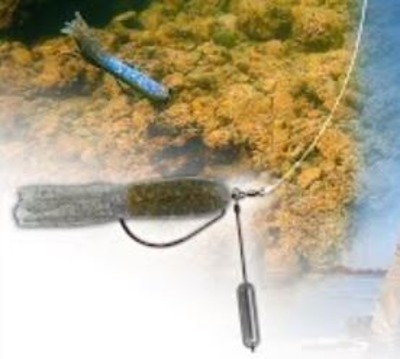
In recent years, the Tokyo rig has become one of the most popular ways to rig tubes.
With the weight completely separate from the bait, you can weedless hook the tube without a weight or sinker getting in the way.
A Tokyo rigged tube has become a go-to option for me when I am fishing for smallmouth bass in grass or wood.
The Tokyo rig keeps the tube weedless and also a few inches off the bottom.
This keeps it out of any mud or algae on the bottom, making it easier for bass to see it.
5. Jig Head with Weed Guard
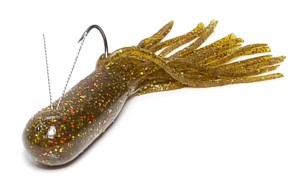
There are specific jig heads that are designed to rig tubes weedless. The problem with these is that the weed guard is usually a thin piece of wire or plastic.
These guards tend to bend easily and can still allow your tube to get hung up on branches or grass.
If you are fishing sparse cover, weed guarded tube jig heads can be a great option. But if you are flipping to thick vegetation or wood, they can still get you hung up.
6. Belly Weighted Swimbait Hook
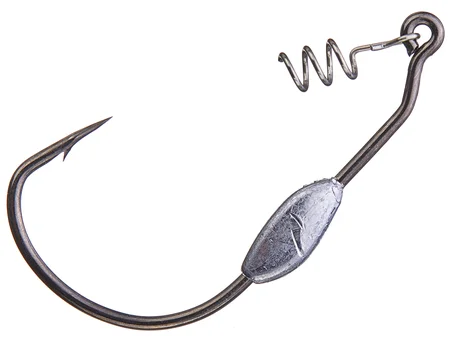
Using a belly weighted hook to rig your tube weedless will work best when you are working the tube faster.
Because of the weighted belly, when the tube hits the bottom, it will fall over to one side and lay sideways.
I can’t say that this will get you less bites, but I just don’t like when my lure runs funky like this.
When using a screw lock hook with a tube, there really isn’t anything to screw into since the bait is hollow.
So solve this, tear off a half inch of Senko or any soft plastic bait.
Push this small piece to the front of the tube so that the screw has something to grip into.
7. Shaky Head
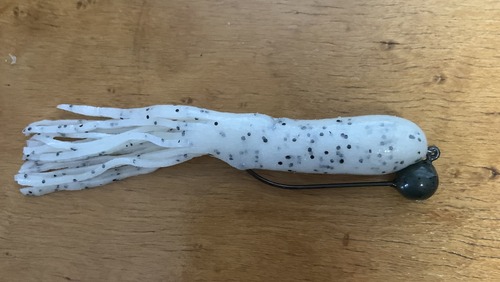
The shaky head is a fantastic way to rig up a tube. I especially love this setup during the winter months for largemouth bass.
Dragging a red or white tube on the bottom fish a shaky head slays winter time bass.
Especially in small winter ponds. Of course, this setup can still catch bass all year round, but something about dragging a tube seems to work better in cold water.
When to Fish Weedless Tubes
- Heavy Vegetation and Cover:
- Ideal for navigating through thick weeds and submerged structures.
- Provides a stealthy approach where traditional lures might get stuck.
- Shallow Waters:
- Effective in shallow areas where fish congregate for feeding or spawning.
- Weedless design prevents snags, offering a natural presentation.
- Post-Spawn Period:
- Targets post-spawn fish seeking refuge in shallow, weedy areas.
- Mimics small prey, enticing hungry and protective post-spawn fish.
- Clear Water Conditions:
- Excels in clear water where subtlety is crucial.
- Natural movement and weedless design fool wary fish in heightened visibility.
- Versatility in Changing Conditions:
- Adaptable to fluctuating water levels, varying vegetation, and transitioning seasons.
- Experiment with colors, sizes, and retrieval techniques for optimal results.
Also Read: Best Weedless Ned Rig Setups
FAQ
Q1: What is tube bait fishing, and why is it effective for bass?
A1: Tube bait fishing involves using soft plastic tube lures to attract and catch bass. The hollow design of tube baits allows for a versatile presentation, mimicking various prey species. The subtle movements and lifelike appearance make them highly effective in enticing bass in different conditions.
Q2: When is the best time to use tube baits for bass?
A2: Tube baits shine in various situations. They are particularly effective in post-spawn periods, in heavy cover, and in clear water conditions. Their adaptability makes them suitable for shallow waters and when bass are seeking prey near structure or vegetation.
Q3: How do I rig a tube bait for bass fishing?
A3: Common rigging methods include Texas rigging, Carolina rigging, or using a jig head. Texas rigging is popular for weedless presentations, while Carolina rigging allows for a more natural movement. Jig heads are effective for deeper waters. Experiment with different rigging techniques based on the conditions you’re fishing.
Q4: What are the best colors for tube baits when targeting bass?
A4: Bass can be selective based on water clarity and light conditions. In clear water, natural colors like green pumpkin or watermelon often work well. In murky water, go for darker hues like black or blue. Experiment with color variations to match the forage and conditions of your fishing spot.
Q5: How should I retrieve a tube bait to attract bass?
A5: Vary your retrieval techniques to find what works best. Common approaches include a steady retrieve, hopping the bait along the bottom, or incorporating pauses to mimic injured prey. Pay attention to the bass’s behavior and adjust your retrieval accordingly.
Q6: Can tube baits be used in both freshwater and saltwater environments?
A6: Tube baits are primarily designed for freshwater bass fishing. However, some anglers have found success using them in saltwater for species like redfish and flounder. Ensure you choose durable materials suitable for saltwater conditions if attempting this crossover.
Q7: Are tube baits suitable for beginners?
A7: Yes, tube baits can be beginner-friendly due to their versatility and ease of use. Start with basic rigging techniques and experiment with different colors and retrieves to build confidence and experience with this effective bass fishing lure.
Tying this Off

While some of these rigs aren’t the most pretty, they all work very well.
Each weedless tube rig is a bit different and has its time and place. One of the most fun and exciting things about bass fishing is trying new lures, baits, and rigs.
But while bass are seeing the same baits all day from other anglers, fishing a tube can be the difference maker that gets you more bites.
If you have been wanting to start fishing tubes but have lots of weeds or brush in your pond, no need to worry. Choose a couple of these rigs and give them a shot.

